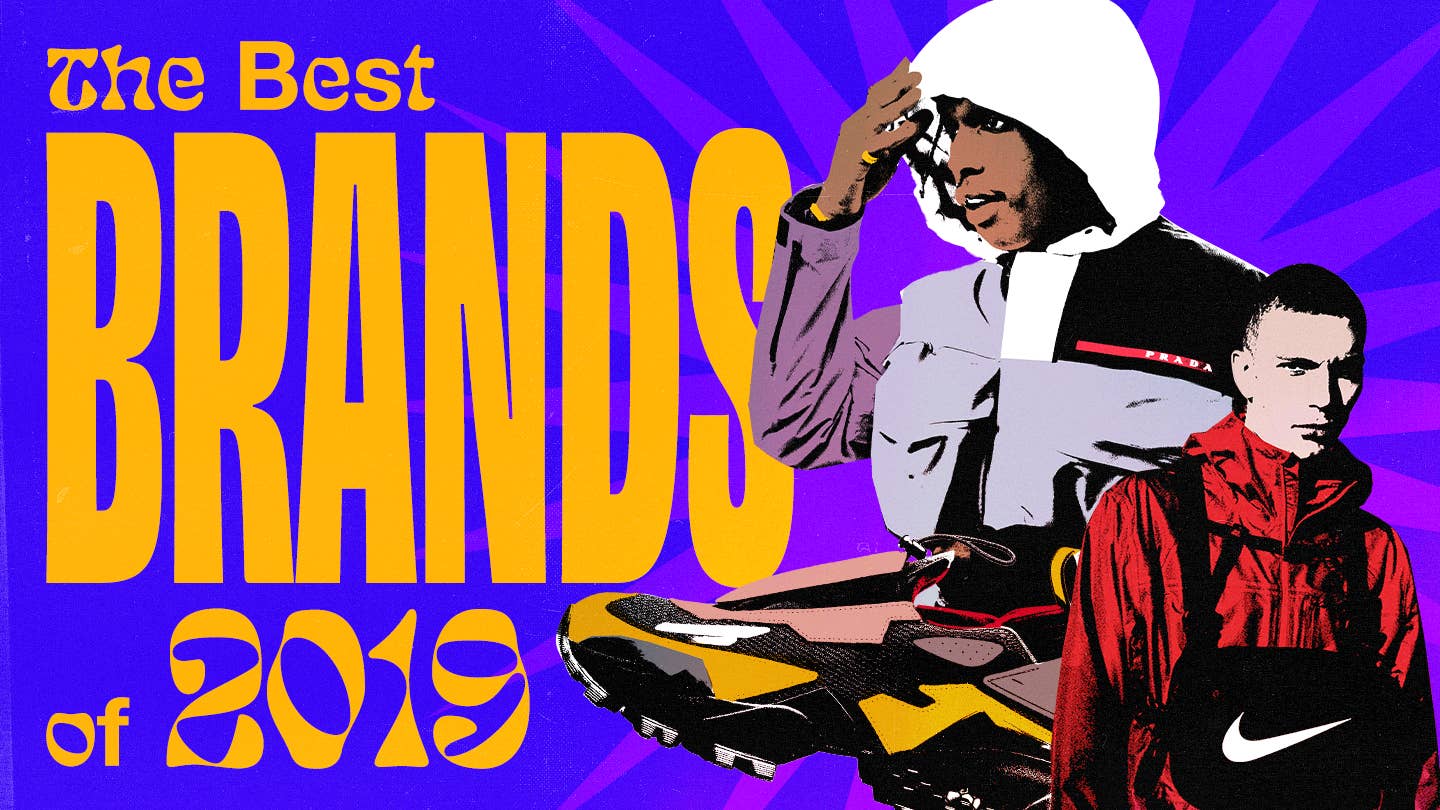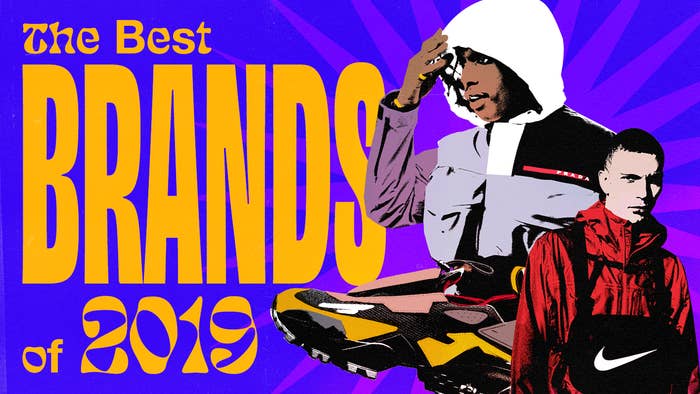
Image via Complex Original
As we hit the end of 2019, streetwear is still leading the conversation in fashion. The definition of streetwear, and how people categorize it, has changed, but designers who authentically embrace tenets of the culture and interpret them in their own way are winning. Earlier this year, LVMH said the company observed revenue growth in the double digits that aligns with the arrivals of Kim Jones, the creative director at Dior Men, and Virgil Abloh, who holds the same position at Louis Vuitton men’s.
Outside of the luxury conglomerates, there are brands like Aimé Leon Dore, Rhude, and Pyer Moss that are extending their reach with strong product and storytelling. Meanwhile, large Japanese brands like Uniqlo, and cult ones like sacai, had their moments this year with on point product people clamored for. Nike is continuing to stake its claim in fashion by working with most of the designers on this list, including Fear of God’s Jerry Lorenzo, John Elliott, Alyx’s Matthew M. Williams, Abloh, and Cynthia Lu of Cactus Plant Flea Market. The industry is changing month by month, and each brand on this list is adapting, and succeeding, in its own way.
Here are Complex’s picks for the best brands of 2019.
Uniqlo
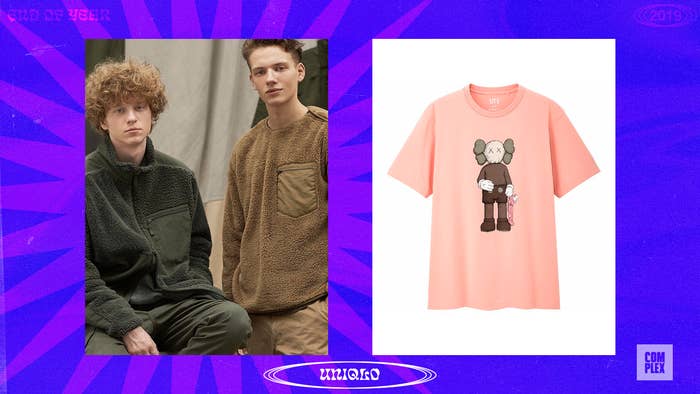
Uniqlo isn’t usually the first brand that comes up in conversations about who's making the best clothing today. But let’s keep it 100, while retailers like Gap and H&M struggle to court consumers, Uniqlo is creating frenzy around its assortment. The Japanese company has mastered the art of delivering high quality and stylish basics at prices that make it accessible to nearly anyone. Ever since Nigo became the creative director of Uniqlo’s T-shirt line, UT, in 2013, the brand has paved roads into the streetwear community. Although Uniqlo has collaborated with streetwear brands like Undercover and designers like Jil Sander in the past, 2019 felt like the year Uniqlo became an official stop on the hype train. In June, Kaws released his final collaboration with Uniqlo, which consisted of T-shirts featuring his beloved companion character; an iconic staple of Kaws’ work that older streetwear heads remember from his defunct clothing brand, OriginalFake. When the collection dropped, it sold out quickly online and led to mall brawls in China. Six months after the release, it held a spot as one of the top 10 items sold within the past three days on StockX. A collaboration with the cult Japanese brand Engineered Garments made a $40 fleece one of the must have–and most memed–items this winter. Ongoing collaborations with Lemaire and J.W. Anderson, and new collaborations with rising designers like Verdy, show that Uniqlo has been able to keep its finger on the pulse of what’s trending.—Lei Takanashi
sacai
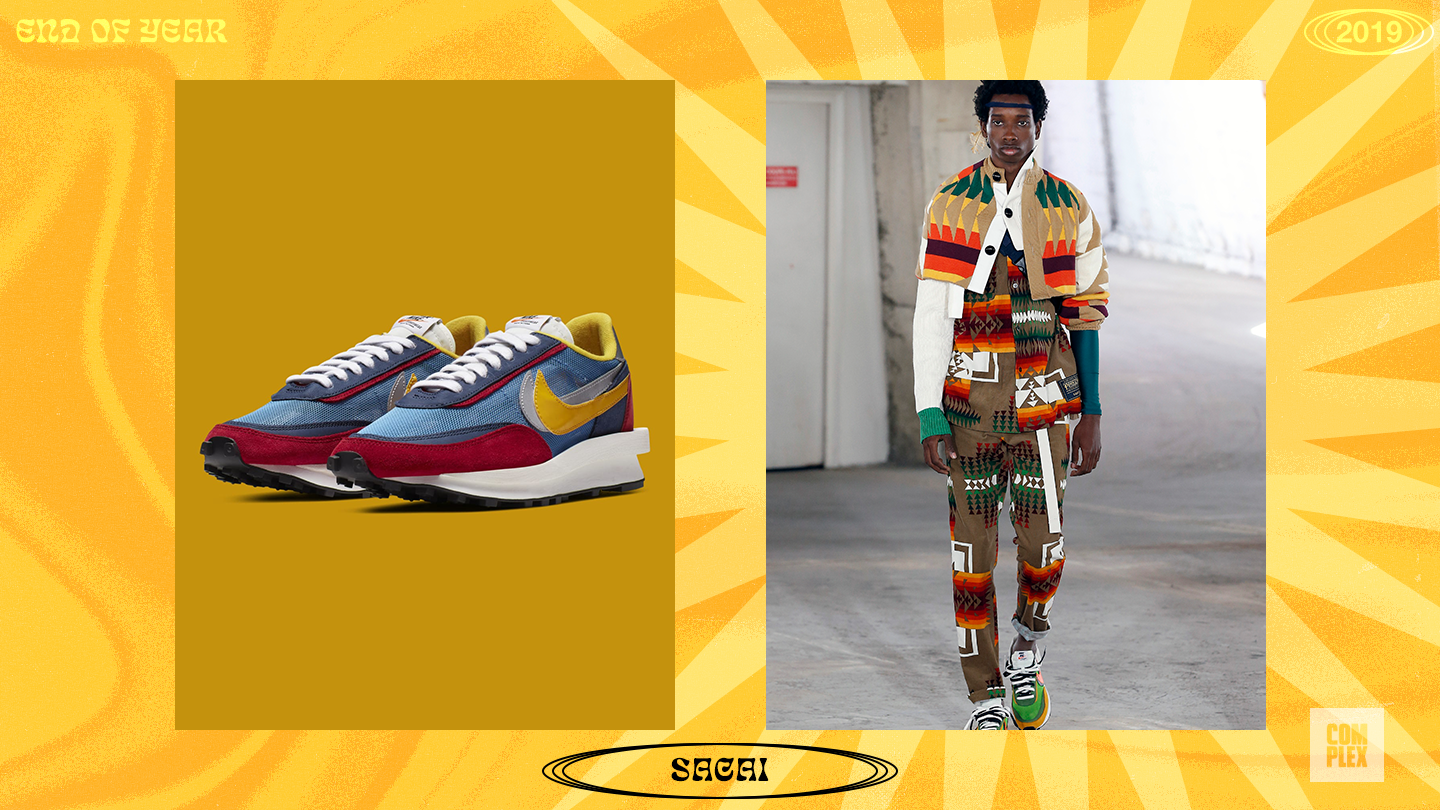
For some, it may be surprising that sacai, the innovative Japanese clothing brand founded by Chitose Abe, officially turned 20 this year. With her background as a former pattern maker at Comme des Garcons and an original member of Junya Watanabe’s design team, Abe has become one of the most innovative clothing designers of today. Sacai, which started in Abe’s apartment and only presented its first runway collection 10 years ago, now makes $25 million in annual revenue and is stocked in more than 90 stores worldwide. At Abe’s Fall/Winter 2019 and Spring/Summer 2020 runway shows, she continued to layer and collage fabrics in bizarre but beautiful ways. Abe is a designer who sees an old Christmas sweater and reimagines the fabric as details that can embellish a trench coat. Digital woodland camouflage found on hunting jackets is reinterpreted as material that perfectly complements a zippered white cardigan. This year, the brand likely picked up a slew of new followers thanks to its deconstructive take on the Nike LD Waffle. Although a hyped sneaker doesn’t fully address Abe’s work, it’s nice step into the aesthetic and world of sacai.—Lei Takanashi
1017 Alyx 9SM

For 1017 Alyx 9SM, form really does meet function. Last year, it was nylon chest rigs. This year, the selection of hiking boots and an incredibly bonkers camo-printed fleece have stolen the show for the Milan-based label. The rising profile of designer Matthew M. Williams has helped add more names to the brand’s long list of collaborators—from ongoing partnerships with Nike and Mackintosh to fresh ones with Japanese leather specialists Blackmeans and Italian technical gear gurus Majocchi. Moncler also tapped the brand for its ongoing Genius series, marrying the outerwear expertise of the two labels for a matte-black-filled collection. Meanwhile, Alyx’s signature rollercoaster buckle continues to ride a wave of popularity, moving from hardware to wristwear—showing that the devil really is in the details.—Skylar Bergl
John Elliott
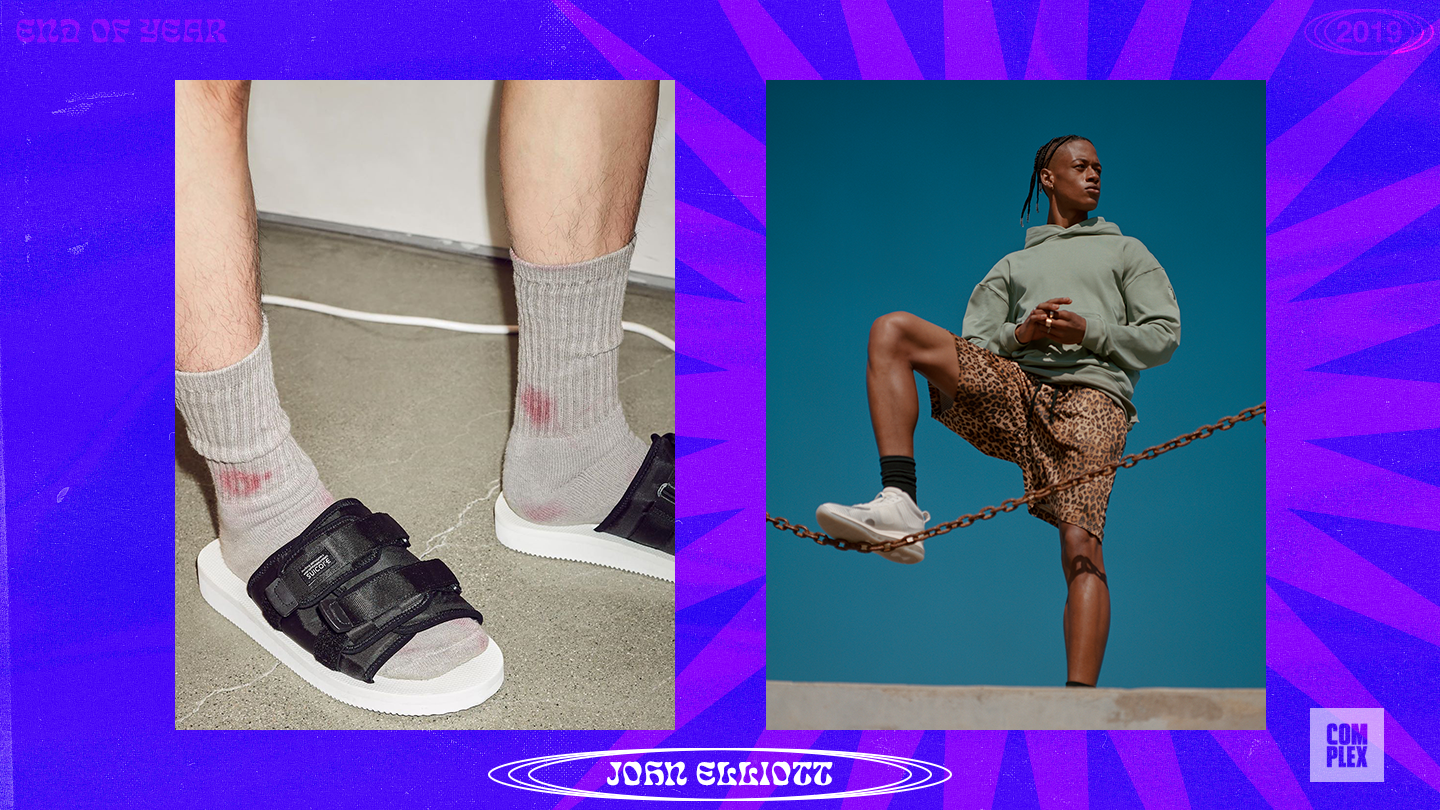
John Elliott’s spring 2019 collection was designed as a love letter to Los Angeles. Pieces with bougainvillea flower prints tapped into the natural beauty of the city’s iconic red flora, while bowling shirts stained with gasoline and multicolored tank tops inspired by fruit stands sought to highlight the working-class communities that make up the foundation of L.A. And his fall 2019 collection feels even more personal and experimental. It’s centered on the theme of deconstructing the Northern California homes that Elliott’s grandparents—and the brand’s new womenswear designer Cara Campagnoli—grew up in. Colorful wallpaper found inside Elliott’s family’s house was printed on cozy white fleeces. Knitted rugs were transformed into loosely draped ponchos. Fabrics that resembled the look of sheep’s wool home insulation turned bombers into pieces that evoked the chaos of a Jackson Pollock painting. At first, an unprecedented collaboration with the construction company CAT seemed like a bizarre move. Yet, with a collection that looks to be built off a home that was torn down piece by piece, functional utility jackets seem like a necessity. Although Elliott is 14 seasons in, it feels like he’s just now comfortable enough to start really telling his story. And as he evolves, so does his business. This year he opened a store in Los Angeles, continued his footwear collaboration with LeBron James, and filled the Saturday night New York Fashion Week slot usually occupied by Alexander Wang. Elliott is just getting started. —Lei Takanashi
Louis Vuitton
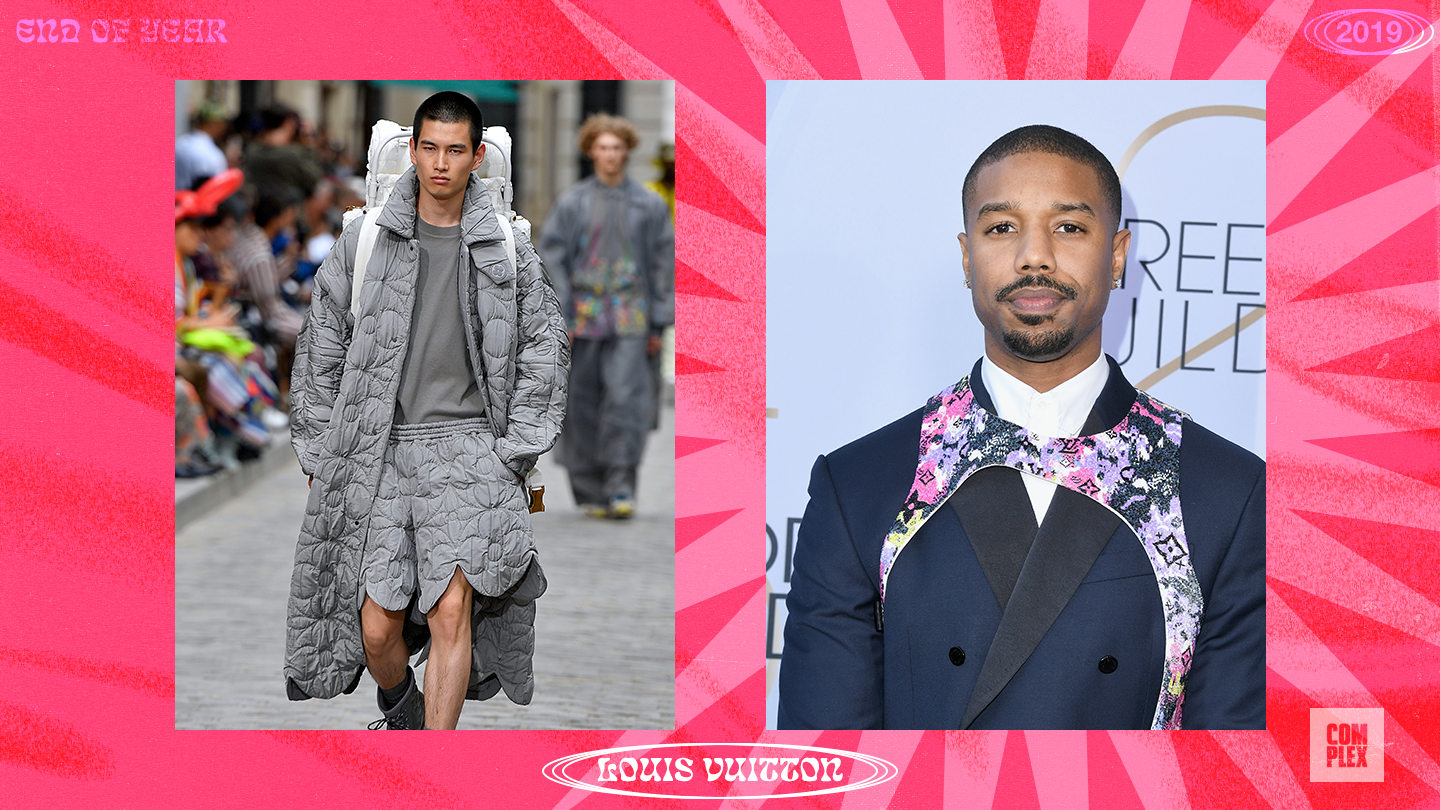
Since appointing Virgil Abloh as its men’s artistic director last year, the energy around Louis Vuitton has continued to build. Abloh’s profile as a cultural force and general polymath has helped bring the historic French brand into the purview of younger consumers—even if they might not be able to afford LV’s luxury goods. With freedom to explore and redefine the brand’s standing in a crowded fashion marketplace, Abloh and Louis Vuitton have shone through with consumer-friendly collections like the Staples Edition, covetable high-end sneaker designs, and more daring accessories and leather goods. The brand’s FW19 collection showed off Abloh and his team’s ability to mix elevated tailoring with logo-heavy gear ready for today’s shoppers and create goods driven by elegant design rather than the hype cycle. At his shows, Abloh further pushed the creative boundaries of the luxury fashion house by working with a varied list of collaborators. He tapped graffiti artists like Futura to paint the set for his Fall 2019 runway show and worked with Playlab, Inc. on inflatable bouncy castles for his Spring/Summer 2020 show. With LVMH revenue soaring last year primarily thanks to the growth of LV and Dior, it’s clear that the hard work is already paying off. —Skylar Bergl
Prada
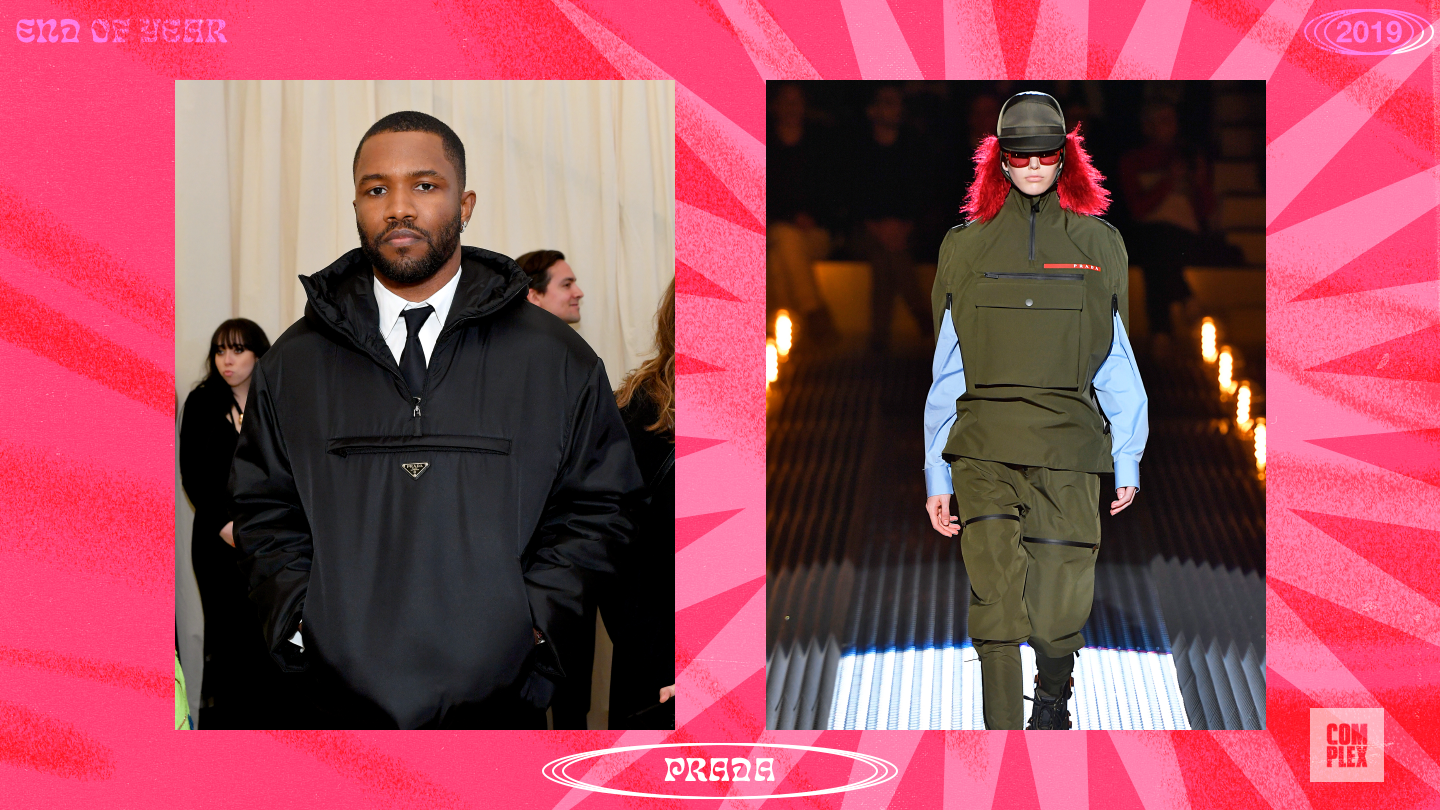
Nineties nostalgia hit a fever pitch last year but hasn’t cooled off as much as we might have expected this year. That’s left Prada at the epicenter of the aesthetic. The Linea Rossa revival is going strong, and a new dose of Prada’s near-irony reared its head when the brand’s padded nylon winter hats hit stores early in the year. Frank Ocean even stole headlines when he showed up at the Met Gala wearing a pullover anorak of the same swishy black material. Not to be outdone, ASAP Rocky commissioned the brand for custom tour gear, complete with flame-filled shirting. It seems that when you start riding the Prada wave, there’s no bailing early—just ask Jeff Goldblum. Prada’s penchant for the offbeat still resonates. They’ve turned rubbery tech sandals and puffy sneakers into new core items and applied tech-y paneling to old staples like loafers and boat shoes, all with great success. The year might be 2019, but the ’90s are alive and well for Prada. —Skylar Bergl
Rhude
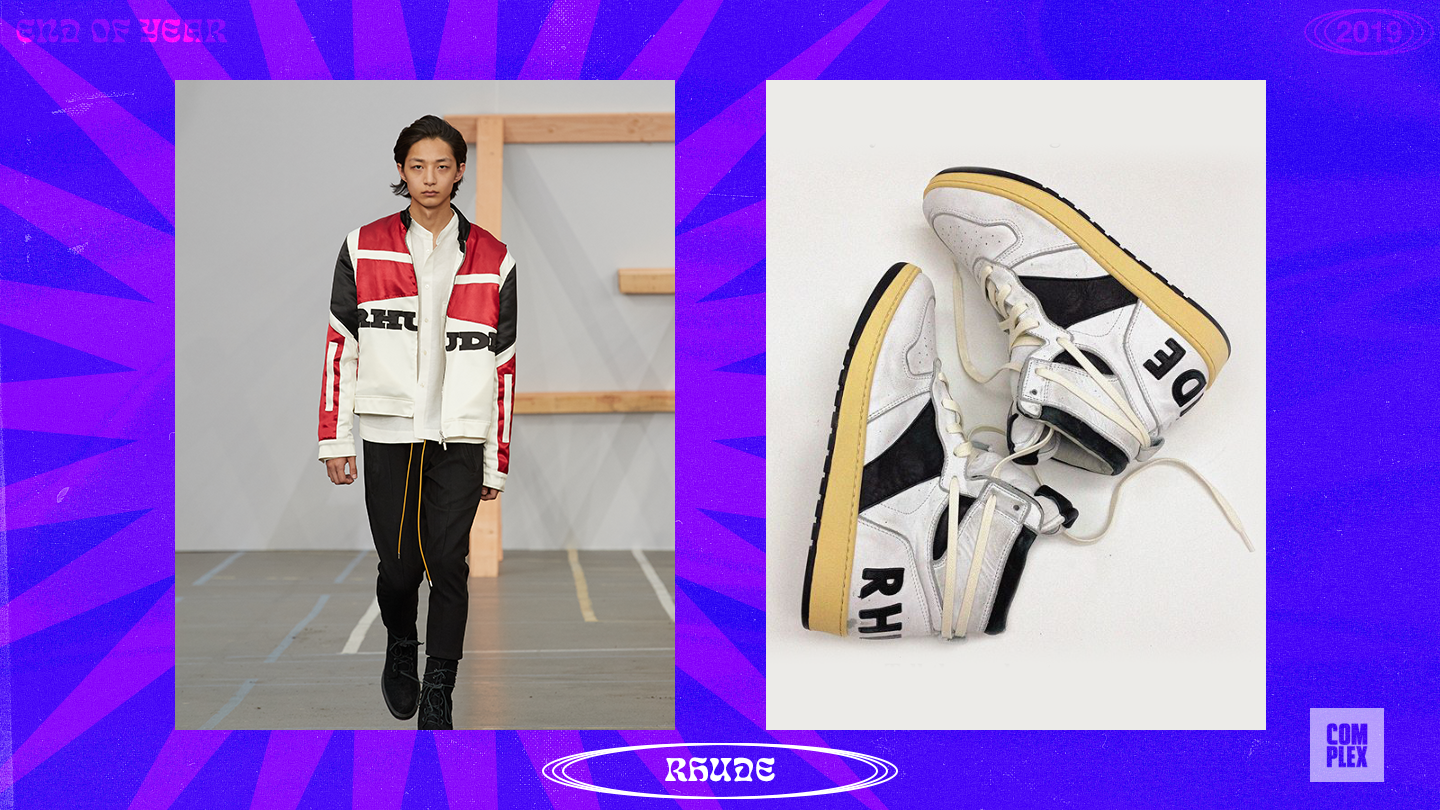
Ever since Rhude broke out seven years ago with a paisley bandanna shirt, the Los Angeles streetwear brand has continued to embrace Americana in unconventional ways. Simply making a pair of leather motorcycle pants isn’t quite enough for a designer like Rhuigi Villaseñor, who is only 27. Standout pieces from the spring collection, like nylon motorcycle pants and flight jackets inspired by packs of Marlboro reds, look like garments James Dean would have worn if Rebel Without a Cause were filmed today—Villaseñor is making modern-day classics that rappers, actors, and athletes can’t get enough of. And while his graphics look cool—sexualized logo flips of drug companies like Bayer and Pfizer are standouts—they also offer subtle commentary on the oftentimes problematic pharmaceutical industry.
This year, the brand has entered the footwear and accessories game with the introduction of their punk-inspired V1 sneakers, a collaboration with Vans, a collaboration with Puma, and a sunglasses capsule with Thierry Lasry. Following its first presentation at Paris Men’s Fashion Week, and a well received pop-up at Maxfields LA, it may be a good idea to cop a pair of Traxedos so you’re not caught lacking when the brand really blows up. —Lei Takanashi
Supreme
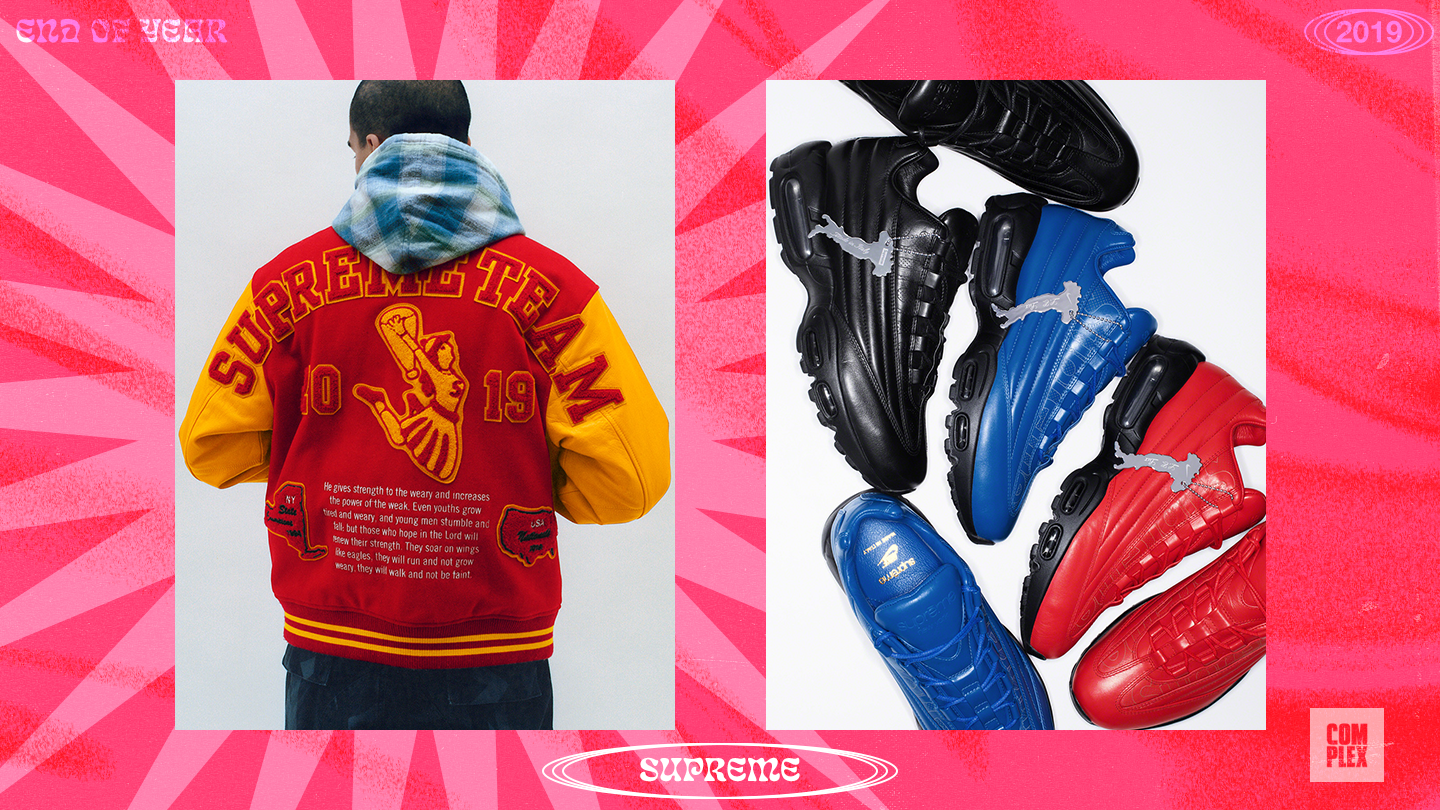
Despite its rise into the mainstream spotlight rubbing some of Supreme’s longtime loyalists the wrong way, there is no denying the impact and status of founder James Jebbia’s brainchild.
The brand, which back in 2017 was valued at $1 billion by the Carlyle Group, has continued to capture the attention of the streetwear community at 11 a.m. each Thursday. Say what you want about it not being as “cool” as it was before, but there’s only so much you can say when a brand has people wrapped around city blocks around the world for hours just to cop something. Its customer base has changed and broadened, but Supreme has stuck to making exciting product and accessories.
The collaborations, a signature for the brand, have remained consistent so far in 2019. Some of its usual partners, like the North Face, Nike, and Stone Island, returned for new projects. Back in April, the brand collaborated with French designer Jean Paul Gaultier, the latest example of it tapping into the luxury fashion world. Collabs aside, its in-house offerings have also been solid in 2019 thus far, with highlights like hoodies emblazoned with branding to resemble P. Diddy’s Sean John label, rayon shirts covered in cherries, a callback to its 1997 Apple T-shirt graphic on hoodies and caps, trucker jackets with a bedazzled painting of the World Trade Center covering the back, and multiple pieces paying homage to Ol’ Dirty Bastard’s 1995 album, Return to the 36 Chambers: The Dirty Version. Supreme’s quest to put its logo on every novelty item possible continued this year as well, with a drum set, a Meissen porcelain Cupid figurine, a voodoo doll, and even a burner phone..
“But what about the box logos?” Supreme delivered on that front, too, with a special release of hoodies and T-shirts showcasing handcrafted box logos made of authentic Swarovski crystals to celebrate its 25th anniversary that sold out in mere seconds. And the brand’s upcoming bandana box logo is sure to sell out quickly.
Supreme isn’t the low key skate brand it was in 1994. The closing of its original storefront on Lafayette St. and its new store in San Francisco are physical representations of that. But the brand has become so ubiquitous that copycats like Supreme Italia even exist now, a knockoff company peddling counterfeit box logo goodies in China—the real Supreme is currently in legal battles with the corporation. While certainly not something the brand is celebrating, it does show just how huge and desirable the name has become. Pardon the pun, but Jebbia’s empire reigns supreme. —Mike DeStefano
Aimé Leon Dore
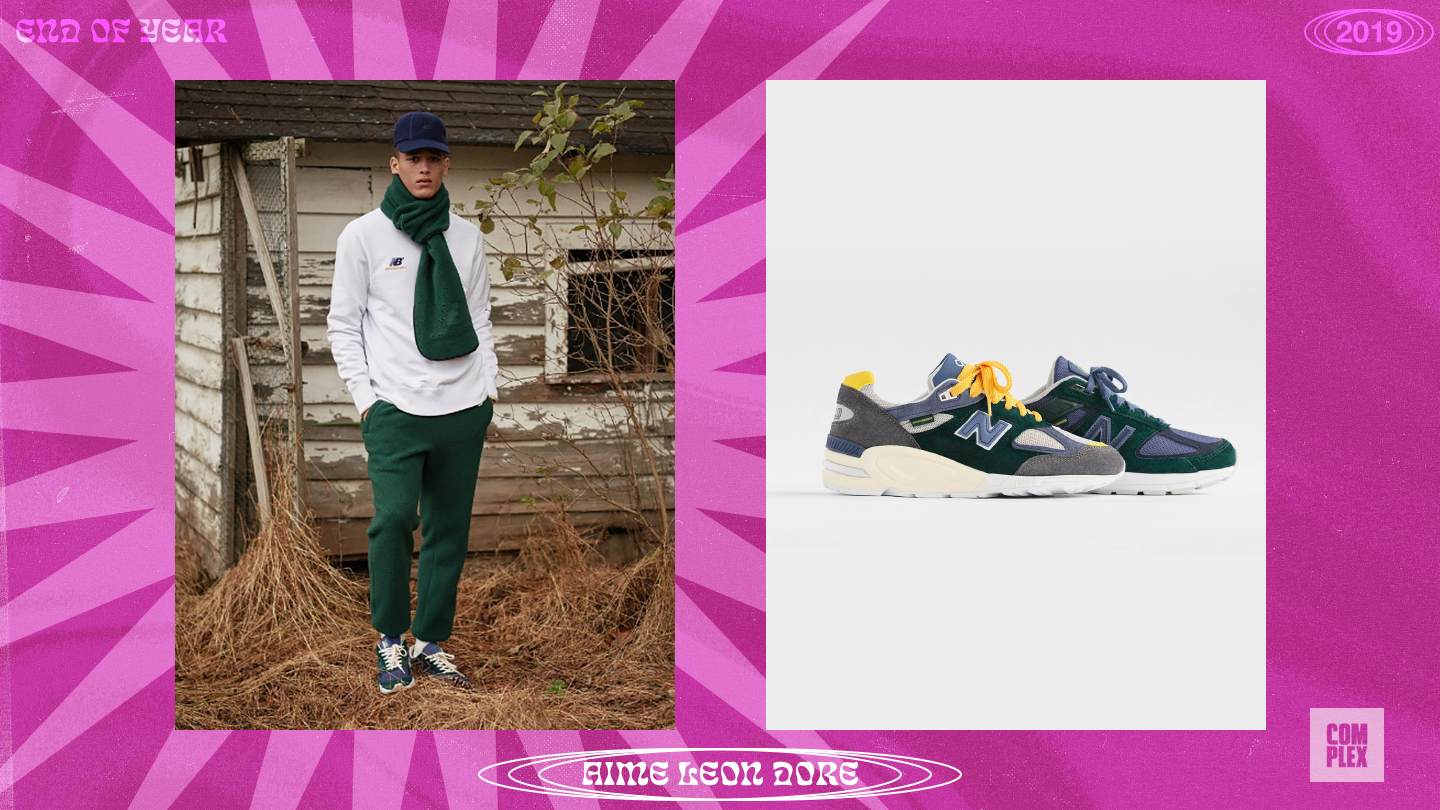
Founded in 2014, Aimé Leon Dore has maintained a cult-like following up to this point with its refined take on streetwear. But 2019 saw Teddy Santis’ New York-based label make its biggest leap forward in its short history. In February, the brand relocated from its original storefront on Mott Street in New York to a permanent flagship space in SoHo. The design is impressive with large leather couches in the center of the shopping area, wood floors, and OG Air Jordan IVs scattered across various areas of the luxurious space. Cafe Leon Dore offers an array of coffees and teas, a welcome addition similar to Ronnie Fieg’s, a close friend of the brand, Kith Treats setup.
Of course, the experience is nothing without good product, and ALD has delivered strong releases throughout 2019 as well. Basic fleece sets adorned with script logos, tapered cargo pants, penny loafers co-signed by Tyler, the Creator, seersucker tie-dye button-ups, and knit sweaters displaying Michael Jordan have all impressed. Longtime fans were kept happy with more premium reworks of the New York Yankees fitted cap, a cultural symbol of its home city as much as the players that don the blue pinstripes. The collaborations have also been consistent as capsules with Woolrich, Drake’s, Suicoke, and more have all released.
Without a doubt, its most coveted products have been its two collections with New Balance. The 997s from the first collection and 990v2 and 990v5 from the more recent November drop both garnered a lot of attention, selling out almost instantly. The latter set caused so much commotion at the in-store release that it was shut down by the NYPD. The brand has honed in on what it does best, and carved out its own lane among the crowded brand space this year. We can’t wait to see how ALD keeps the momentum going in 2020.—Mike DeStefano
Cactus Plant Flea Market
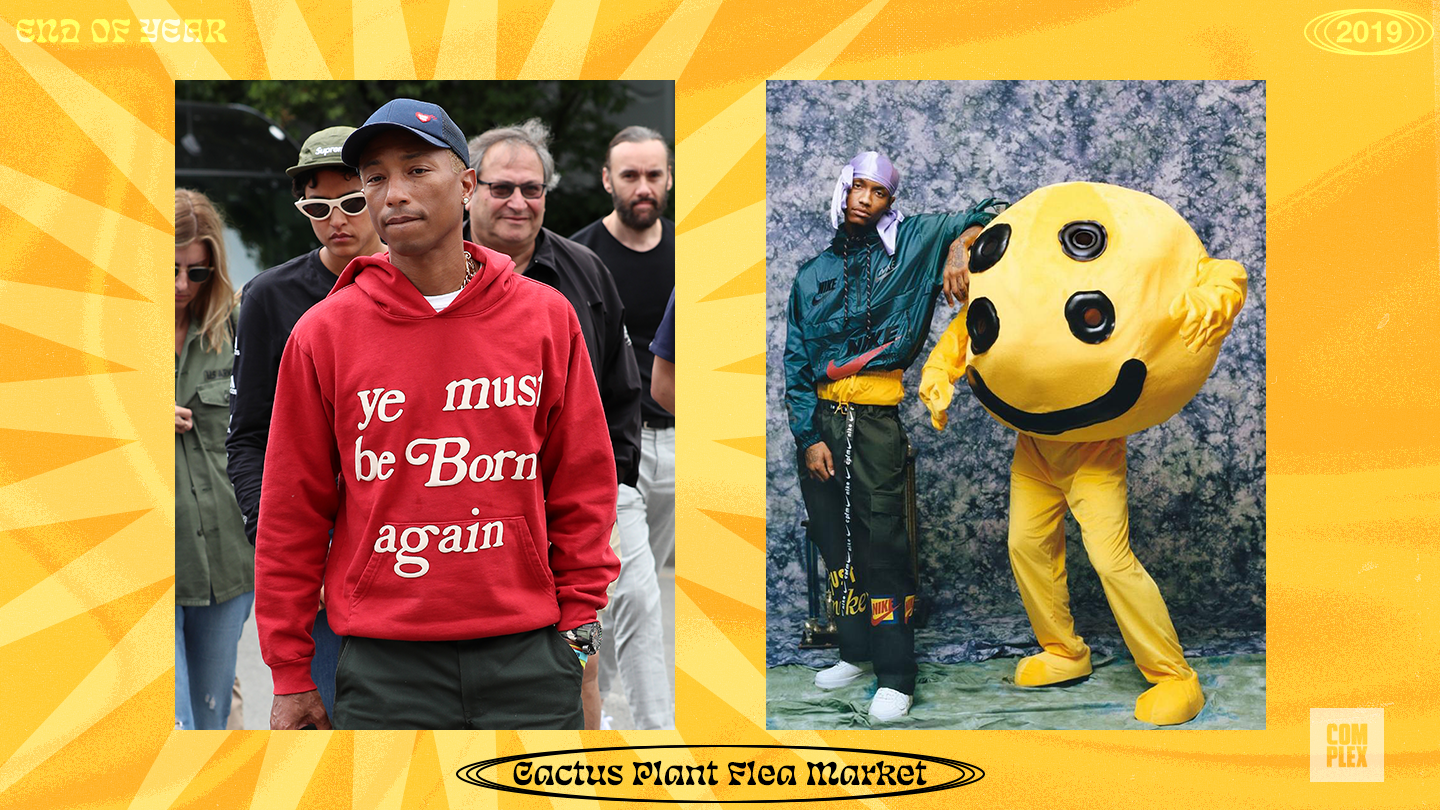
Despite Cynthia Lu staying as far away from the public eye as possible, few have been able to rival the impact her brand, Cactus Plant Flea Market, has had on streetwear over the past 365 days. Its DIY aesthetic, highlighted by puff print lettering and crudely sketched smiley faces, is immediately recognizable when you see it. And you’ve probably seen it a lot. Style heavyweights from across the board like Pharrell, Kanye West, ASAP Rocky, Lil Uzi Vert, LeBron James, and plenty more have all been spotted in the brand this past year.
The many collaborations, which dropped consistently, remained as desirable and limited as her Kids See Ghosts merch from a year prior. More pieces were released for West and Kid Cudi individually. All of it sold out without issue. Legendary rock band The Rolling Stones even commissioned Lu for special tour merch, and CPFM released product with streetwear OGs like Stussy and Chris Gibbs of Union Los Angeles. However, its biggest releases were with Nike. CPFM followed up its well-received VaporMax 2019 that dropped back in May with a Blazer Mid, and Air Force 1 Lows wrapped in lettering inspired by the Air More Uptempo. The apparel that accompanied the latter was some of the most hyped-up of the year, highlighted by a teal anorak and white hockey jersey. The trippy graphics and DIY designs were a big trend this year with CPFM acting as the poster child for them. Seeing how it evolves for its next chapter will certainly be interesting.—Mike DeStefano
Dior
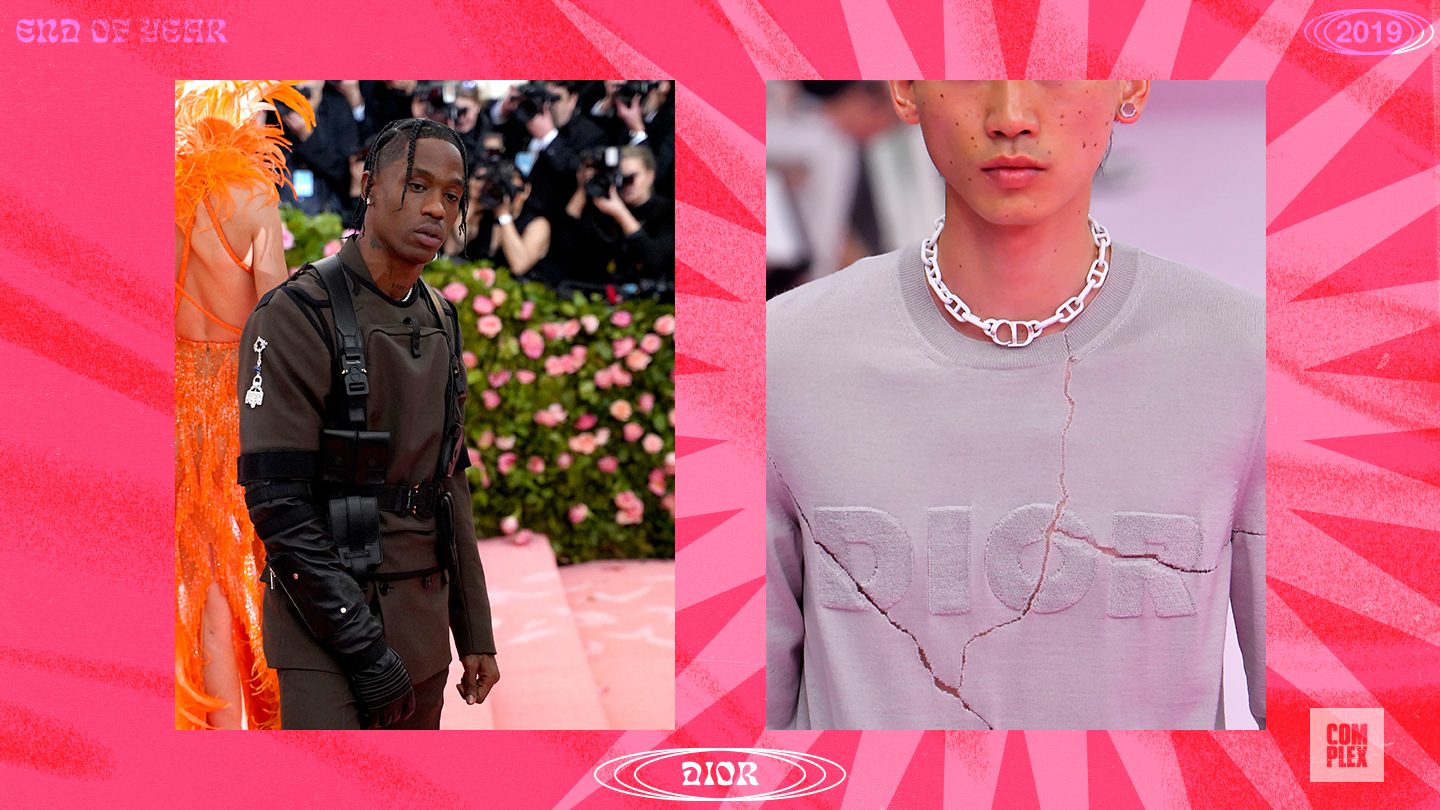
Reinvigorating a brand is hard to do, but Dior creative director Kim Jones makes it look pretty damn easy. The former Louis Vuitton-er has taken the reins and given Dior’s collections a new edge, turning them into must-see entertainment each time they hit the runway. He’s carried over some of his ideas from the LV era too. Just like he tapped Supreme while with the Parisian fashion house, he recently showed off a Dior collaboration with streetwear OG Shawn Stussy at Art Basel Miami. The same day, with the help of Travis Scott and company, Jones unveiled an official Air Jordan I collaboration slated for 2020. The premium pair will reportedly be ultra limited. The buzz already has people asking for thousands on the resell market. Partners like Matthew M. Williams of Alyx and Yoon Ahn of Ambush continuing design work on accessories and jewelry also showcases Jones’ ability to stay in the know and keep the brand fresh.
Always known for incredibly sharp tailoring, Jones and his team have turned classic pieces and twisted them into something for modern shoppers. One look at the FW19 collection shows how clear the vision is: a lineup of minimal double-breasted coats, subdued animal prints, and built-in sashes and scarves. But Dior’s history of accessories is continuing just as strongly, with archival pieces like the Cannage-printed weekender bags coming back.
Don’t forget sneakers, either—Jones’ long history is on display with loudly printed high-tops that have been seen on the feet of just about every influencer out there. Dior even got the opportunity to design tour outfits for Korean boy band BTS—with ambassadors like that, you can see how it’s cementing its spot among the most prominent brands out there today. —Skylar Bergl
Fear of God
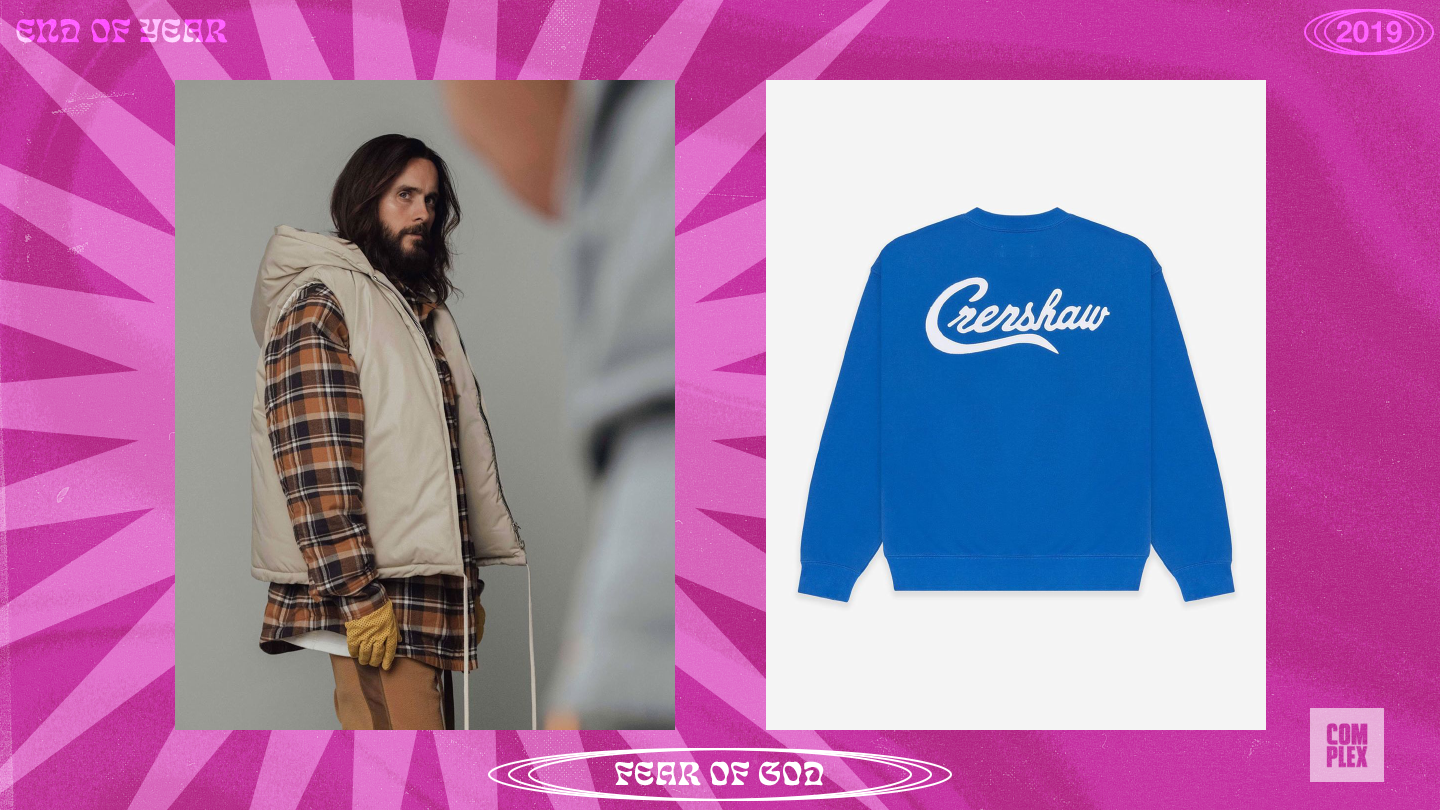
When you think about luxury streetwear, chances are Jerry Lorenzo’s Fear of God is one of the brands that pops into your mind. In 2013, Lorenzo began providing his signature boxy T-shirts and perfectly tapered denim to the masses, and six years later he shows no signs of letting up.
Lorenzo’s Nike Air Fear of God collection that debuted in late 2018 continued this year, highlighted by more colorways of his original performance basketball model, the Air Fear of God 1. Two new models were also introduced, the ’90s-inspired Raid and Moc, along with sportswear pieces like fleece tearaway pants and mesh tops spun to match Lorenzo’s signature aesthetic. In addition to his popular Nike lineup, the Los Angeles-based designer is expanding FOG’s footwear as well. The brand’s online store currently boasts dressier options like Chelsea boots and suede moccasins alongside skate-inspired looks like the 101 Bone and 101 Backless, which take some design cues from classic Vans models.
Looking elsewhere, the 43-year-old designer kept fans happy with consistent offerings from his Essentials diffusion line, the most notable being a Crenshaw capsule collection with The Marathon Clothing honoring the late Nipsey Hussle. Back in October, Lorenzo opened the brand’s first retail “atmosphere” in Los Angeles, too, which was kept fresh with a handful of exclusive capsules throughout the past few months. The product has remained true to Lorenzo’s established uniform, with pieces like distressed work jackets, bombers with large back branding, and pants with long-hanging drawstrings.
Perhaps the most impressive part of the brand’s status is its consistency. Lorenzo has never been one to change with the trends or collaborate with everyone to get people’s attention. Simply put, Fear of God exemplifies what luxury is right now. Don’t expect his shine to fade. —Mike DeStefano
Kith
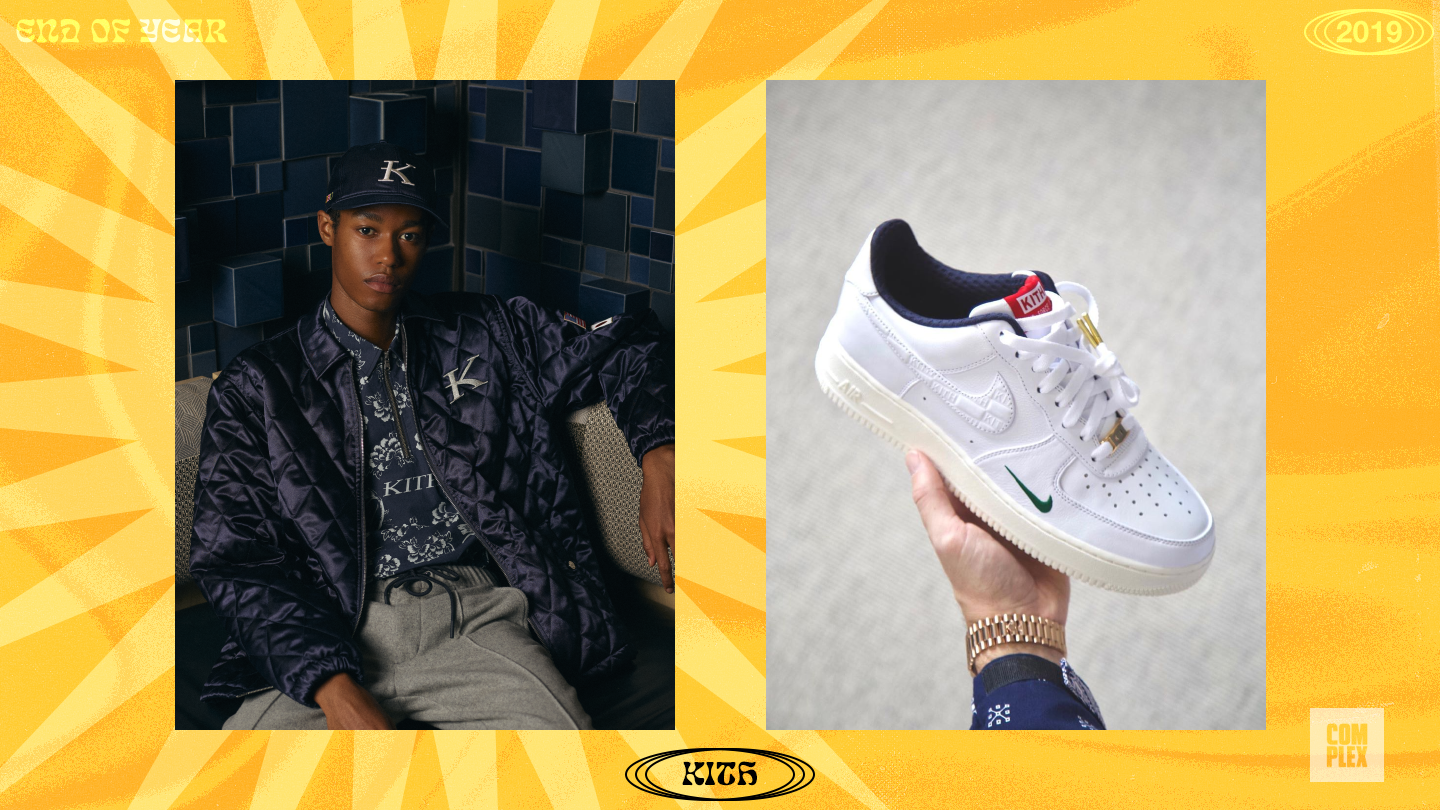
Ronnie Fieg finished off 2018 strong with one of Kith’s best projects to date, an expansive collection with ’90s icon Tommy Hilfiger, which he re-upped with another collection this year. This year has proven to be more of the same for Fieg, as he continues to bolster his resume and check collaborators off of his bucket list.
His latest New York Fashion Week presentation in September, Kith Air, was his most grandiose to date. A brand new Fall collection was shown off on the runway alongside collabs, Kith’s bread and butter, with new names like Pendleton, Rhude, Disney in celebration of Mickey Mouse, and even high end sushi restaurant Nobu. Russell Athletic, Vogue, and Converse continued their existing partnerships with Fieg as well.
The brand remains a way for Fieg to project his vast interests to the world, and more often than not his consumers are intrigued by his pursuits. One week he could be channeling the fondest memories from his childhood. The next he is pushing Kith’s influence further into the luxury space with one of the brand’s biggest collabs to date, an extensive line with Versace that even featured Bella Hadid in its campaign.
The rollout of the Versace collab also showcased Fieg’s knack for storytelling as he partnered with some of his favorite brands, like Sadelle’s, Cha Cha Matcha, and Dean & DeLuca, to redesign special items that were available the week leading up to the release. It isn’t simply about the products with Kith. It’s about the customer’s experiences, which are considered with a close attention to detail.
There’s really no way to predict what Fieg will decide to channel next. Aside from the collabs, Kith’s in-house line of cozy staples and denim have improved with each collection. And the brand will only continue to expand its reach. Case in point, the New York-based streetwear imprint went international for the first time in 2019 by opening an outpost at Selfridges in London. It’s probably a safe bet that this is only the beginning of Fieg’s worldwide plans, too.—Mike DeStefano
Nike
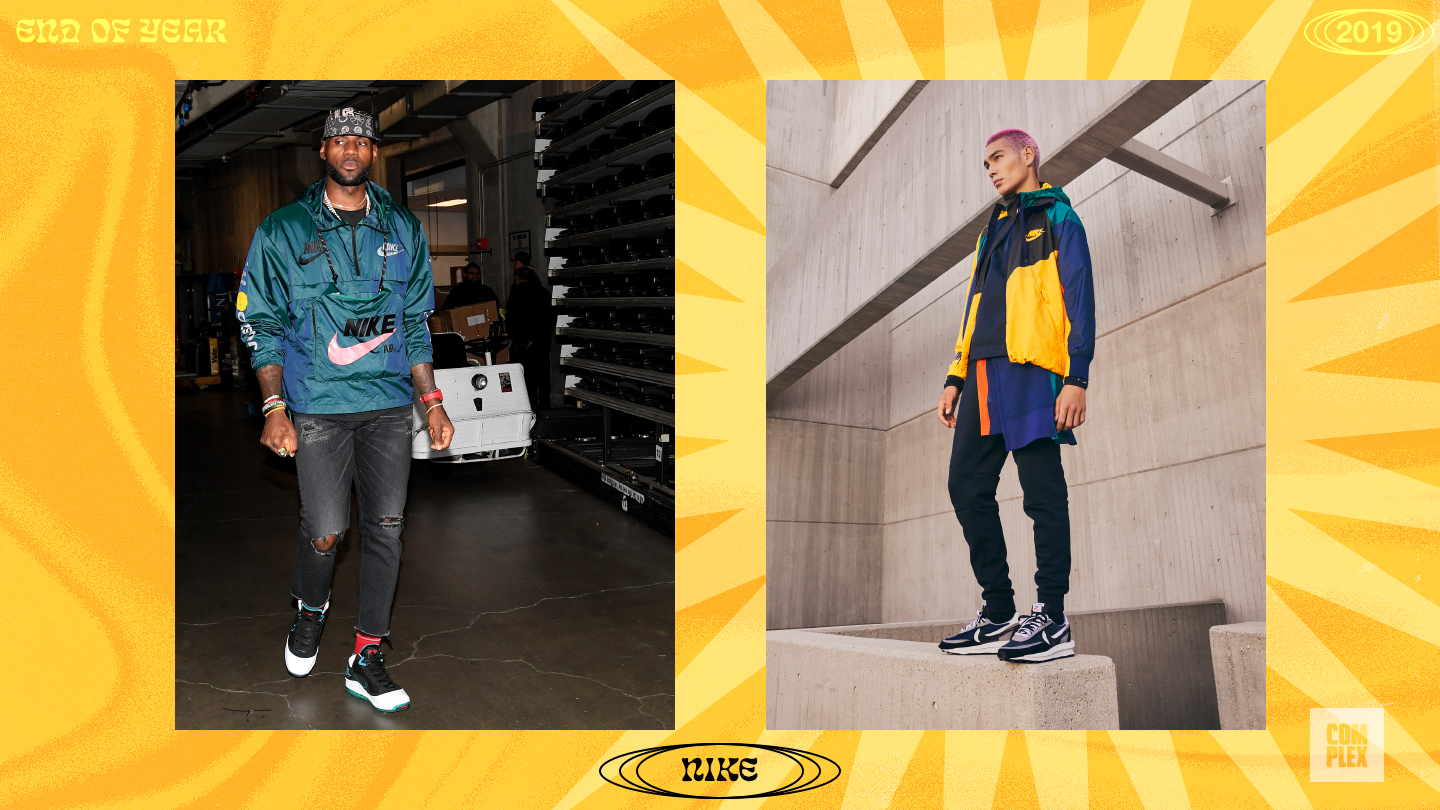
Nike has kept the momentum going in 2019, proving time and time again its ability to choose the perfect collaborators who breathe new life into its extensive archive.
Fear of God and Off-White consistently dropped new products with the brand—tennis legend Serena Williams even donned one of Virgil Abloh’s designs at this year’s Met Gala. And not to be confined to product, Abloh also collaborated with Nike to open the Re-Creation Center in Chicago this past May. While it will feature limited footwear and apparel drops, its main purpose is to provide an outlet for local creatives with workshops and mentorship programs.
Fear of God expanded its Air Fear of God lineup with basketball-inspired apparel releases like mesh shorts and shooting shirts, and debuted the Raid and Moc footwear silhouettes in multiple colorways.
The collabs don’t stop there, either. Alyx’s Matthew M. Williams released more futuristic training apparel and multiple sneakers including the Free TR 3 SP with removable Vibram soles. John Elliott continued his work with LeBron James by releasing new colorways of the Icon and matching apparel collections; Ambush dropped an unconventional Air Max 180 collab and well-received women’s apparel line; Supreme also linked up with the brand on multiple occasions. Sacai was able to rekindle its relationship with the sportswear giant and produce one of the best sneakers of the year, the LDWaffle that’s captured the attention of sneakerheads and the fashion community alike. Cactus Plant Flea Market also brought its unique aesthetic to various sneakers, and issued its first apparel collection complete with melting smiley faces and bold lettering that was spotted on such names as Offset and LeBron James to name a few.
Nike has its finger on the pulse of the fashion world right now. The brand’s decision to tap some of the biggest designers today and give them creative leeway has played an integral part in helping it keep its throne atop the sportswear market, a position it doesn’t look to be giving up anytime soon. Maybe Drake said it best when he proclaimed, “Checks over stripes.” —Mike DeStefano
Pyer Moss

In 2018, Kerby Jean-Raymond was pretty damn busy. In addition to winning the CFDA/Vogue Fashion Fund award—a cash prize for emerging American designers—he collaborated with FUBU and Reebok, all while presenting awe-inspiring collections that grapple with everyday life for black men and women. He grabbed everyone’s attention with T-shirts featuring “Stop Calling 911 on the Culture” and “See Us Now?” messaging. And for Jean-Raymond, 2019 has been even busier.
He continued to shed light on the African-American experience with the launch of "Collection 2"—the second installment of his "American, Also" campaign—which utilizes boxy shoulders, full-bodied, silky silhouettes, and artwork commissioned from Baltimore-born painter Derrick Adams. He grew his partnership with Reebok within that collection with color-blocked sportswear that continued to build the brand’s relevance as he showed their collaborative prowess. His work has been so well-received that he was appointed creative director of the brand new Reebok Studies__ division back in July. He graduated from CFDA Vogue Fashion Fund to CFDA Menswear Designer of the Year nominee, even being recognized by the Pratt Institute of Fashion with the Visionary Award, which was presented to him by the venerable Dapper Dan. In September, he packed the Kings Theatre in Brooklyn for his “Sister” Collection 3 show that some said had the energy of a Sean John event from the early 2000s. Ironically, he showed off collaborative pieces with Diddy’s label the same night. Oh, and I guess he was also an honored guest at the Met Gala, dressing the likes of Colin Kaepernick and Lena Waithe—he and Waithe wore zootsuits with pinstripes that were actually song lyrics from black artists who helped define camp, the theme for the evening, and buttons made to look like rappers including JAY-Z, Nas, 2Pac, and Nipsey Hussle.
There’s obviously a reason why Raymond and Pyer Moss continue to be recognized by the world of fashion. The label not only produces garments people want to wear, it has a succinct and powerful message that comes through in whatever Raymond does. Let’s hope there are more opportunities for him to present that message and his clothes in the second half of 2019. —Nick Grant
Union
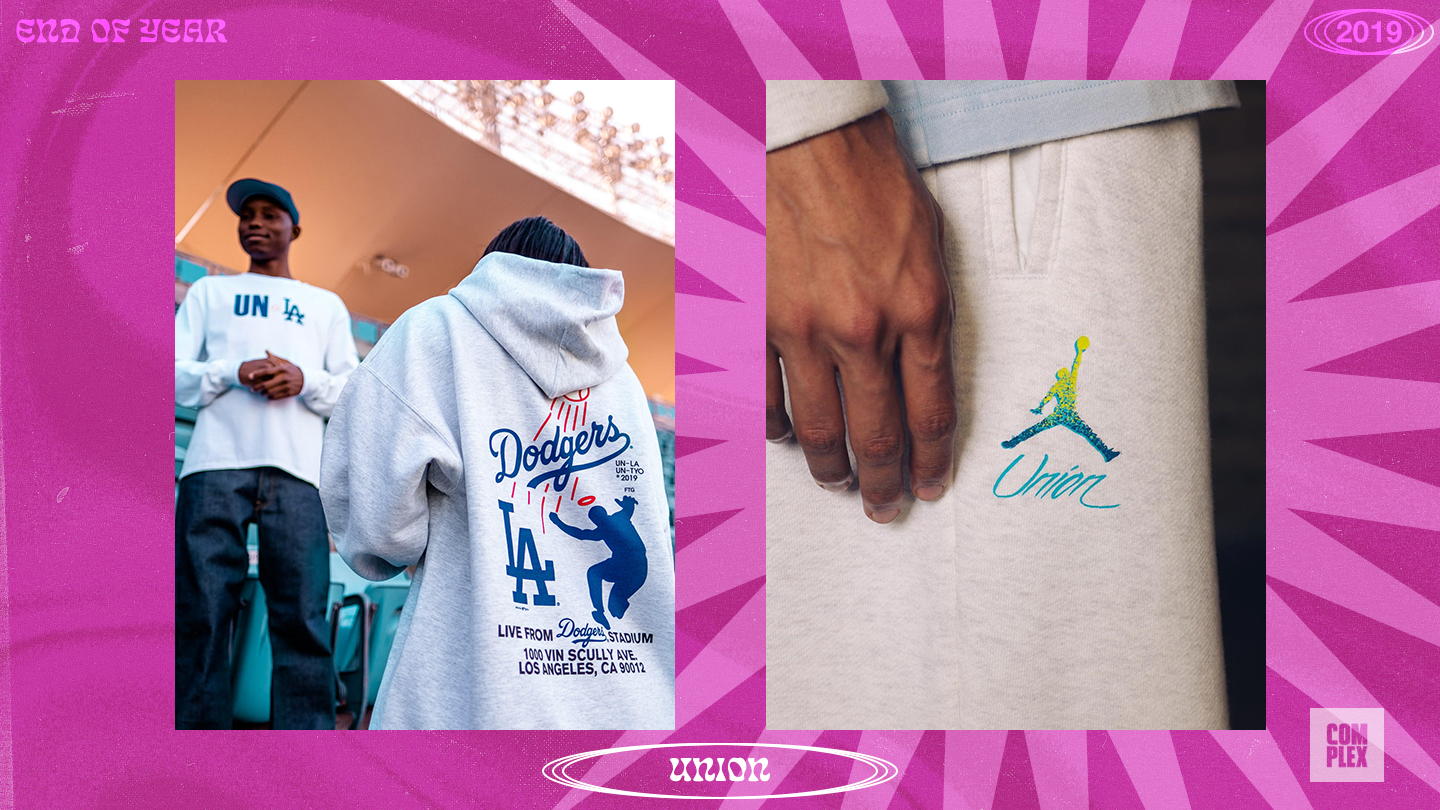
Union has been a purveyor of cool since it opened its doors in NYC in 1989. For years, it’s stayed ahead of the curve and offered obscure Japanese labels and up-and-coming brands, many of which you often couldn’t find at other retailers. The goal for the shop, as lived by its owner Chris Gibbs and his wife, Beth, Union’s co-owner and creative director, has always been just to buy “dope shit.” No politics, no nothing. If it was good, chances are Union had it.
Since launching their in-house label in November 2017, they’ve done nothing but build upon that mantra by producing a diverse mix of culturally relevant streetwear alongside cut-and-sew Japanese workwear-inspired capsule collections—and you have no choice but to appreciate just how dope their shit has been. That continues to spill over heavily into 2019, as they’ve already had a very deliberate collaboration with growing streetwear powerhouse AWAKE NY to commemorate Black History Month. But Gibbs and co. made sure to continue pushing for a mixture of storytelling graphics alongside unique silhouettes, which came to fruition with their two biggest drops of the year: Union’s vintage-inspired graphics collection concentrating on the convergence of music and film that dropped in February, followed by an extremely utilitarian cut-and-sew collection fit for a very stylish ’80s California beach gathering that features boxy chore coats, an old-school track jacket, and baseball pants inspired by a pair Gibbs found in one of his favorite vintage stores in Tokyo. In November, the brand referenced its New York City roots by bringing back the OG Frontman logo as a part of an official project with New Era and the Los Angeles Dodgers for ComplexCon.
Gibbs’ knack for curation can not be overlooked either. Nordstrom tapped him for the “New Concepts” collection back in July, which gave the longstanding department store some much needed “cool” points by offering exclusive goods from the likes of Cactus Plant Flea Market, Rhude, Jordan Brand, and Fear of God.
Needless to say, Union L.A. has become one of the most prominent in-house labels in the world—if not the most prominent—with collections that are no longer overshadowed by pieces they bring into the shop. Their incredible eye for discovering talented brands and carrying product that flies off the rack has trickled down to their own line. —Nick Grant
SHARE THIS STORY
